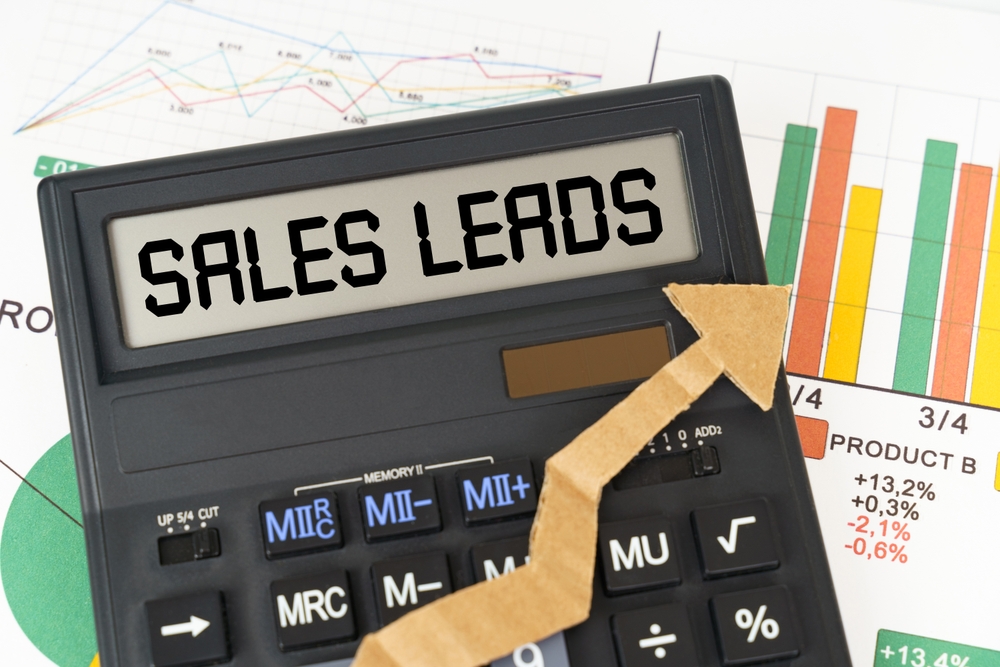
A sales lead represents a valuable opportunity—a potential customer who has shown interest in a company’s product or service. A sales lead may come from various sources, including marketing campaigns, website interactions, social media engagement, and more. For companies aiming to increase revenue through strategic lead generation, understanding and managing these leads is essential.
The Basics of Sales Leads
What are Sales Leads?
A sales lead is any individual or organization that expresses an interest in a product or service, signaling a potential for conversion. Not all leads are created equal, though, as the nature and level of interest can vary. Leads can be classified into several categories to prioritize follow-ups based on their likelihood of conversion.
A lead’s quality depends on factors such as:
- Source of lead (e.g., referral, direct inquiry, or organic interest from content)
- Level of interest and engagement
- Alignment with the target market
Types of Sales Leads
To improve lead conversion rates, sales teams classify leads based on readiness to buy and level of engagement. Here are some types of sales leads:
- Marketing Qualified Leads (MQLs): These leads have engaged with marketing content but are not yet ready to purchase. They’re often nurtured through continued email marketing efforts and informational resources.
- Sales Qualified Leads (SQLs): SQLs have shown stronger intent, such as by requesting product demos or consultations. They’re more likely to convert and typically prioritized by the sales team.
- Product Qualified Leads (PQLs): Common in SaaS and product-led companies, PQLs have experienced the product firsthand through a trial or freemium version, indicating a stronger purchasing intent.
This classification helps businesses allocate their resources effectively by focusing on leads with the highest potential for conversion.

How to Generate Sales Leads
Generating leads is critical for business growth, and businesses use various techniques tailored to their target audience and industry. Here are some proven strategies to help businesses acquire high-quality leads:
1. Leverage Content Marketing
Content marketing remains a top method for generating leads. By creating valuable, informative content, companies can attract prospects and establish themselves as industry experts. High-quality blog posts, webinars, and videos not only build credibility but can also be tailored to capture lead information, making it easy for prospects to engage further.
2. Utilize Social Media Platforms
Social media allows companies to reach a broad audience and connect directly with potential leads. By sharing valuable content, responding to comments, and conducting polls, businesses can increase brand visibility and foster a community. Social media advertising is another avenue for capturing leads directly from platforms like LinkedIn, Facebook, and Instagram, where B2B lead generation often thrives.
3. Email Marketing and List Building
Email marketing campaigns remain effective for lead generation, especially when combined with list-building techniques that capture contact details in exchange for valuable content or offers. To keep leads engaged, businesses often use automated campaign management to deliver targeted emails based on behavior and interests, moving leads gradually closer to a sale.
4. Implementing SEO and Paid Search Advertising
Search engine optimization (SEO) helps potential leads discover your content organically, while paid search advertising places your business in front of those searching for solutions your product or service provides. Both strategies can direct qualified leads to a website, enhancing the effectiveness of a lead generation strategy.
5. Optimize Your Website for Lead Capture
A website optimized for lead capture is essential. Including forms, live chat options, and calls-to-action (CTAs) on relevant pages encourages visitors to provide their contact information. A streamlined experience is crucial here—ensure forms are easy to complete, and CTAs are compelling and strategically placed.
6. Host Webinars and Events
Webinars provide a platform to showcase expertise and directly engage with interested audiences. Hosting virtual events allows businesses to capture leads while nurturing relationships with potential customers through real-time interactions.

How to Qualify a Sales Lead
Qualifying sales leads involves assessing whether a lead is a good fit for your product and if they are likely to make a purchase. This step is critical for sales efficiency, allowing teams to focus on the most promising leads. Here are key methods for lead qualification:
- Identify Pain Points and Needs: Understanding a lead’s specific challenges ensures that the sales team addresses the right concerns. This can be done through initial conversations or by analyzing engagement with certain content.
- Evaluate Budget and Authority: Knowing if a lead has purchasing authority and budgetary capacity is essential. Leads that meet these criteria are more likely to convert and can be prioritized in the sales pipeline.
- Assess Timing and Urgency: Determine the lead’s timeline for purchasing. Leads ready to purchase sooner should receive attention first, while those with longer timelines might benefit from nurturing until they are prepared to commit.
Tools such as CRM systems and lead-scoring software can streamline the lead qualification process, ensuring that teams focus on prospects most likely to convert.
Nurturing and Developing Sales Leads
After qualification, sales teams work on nurturing leads, particularly those not yet ready to buy. Nurturing involves building a relationship with the lead over time through educational content and personalized follow-ups. Here’s how companies can develop leads effectively:
- Drip Campaigns: Automated email sequences can provide valuable information to leads over time, keeping the brand top of mind.
- Targeted Content: Providing targeted content through blogs, case studies, and whitepapers addresses leads’ specific challenges, creating a sense of trust and thought leadership.
- Periodic Check-ins: Friendly check-ins by phone or email remind the lead of the company’s offerings and provide an opportunity to answer questions.
Investing in marketing automation can greatly assist in nurturing leads, allowing sales teams to remain engaged with prospects without overwhelming manual follow-ups.
Tools for Managing Sales Leads
Efficient lead management is crucial for converting prospects into paying customers. Here are some tools and technologies that streamline lead tracking, qualification, and nurturing:
- CRM Systems: Customer relationship management (CRM) platforms are essential for tracking interactions with leads, storing valuable data, and ensuring consistent follow-ups. Many CRMs also offer lead-scoring capabilities, making it easier to focus on high-quality leads.
- Marketing Automation Platforms: These platforms enable teams to send targeted emails, track engagement, and segment leads based on behavior, all of which facilitate a more personalized approach to lead nurturing.
- Analytics and Reporting: Regular analysis of lead sources, conversion rates, and sales funnel performance helps businesses identify areas for improvement and adjust strategies as needed.
Strategies for Generating High-Quality Sales Leads
Generating sales leads is essential for any business looking to grow its customer base. A lead refers to a potential customer who has expressed interest in a company’s offerings, which could eventually result in a sale. Leads can come from numerous channels, from online searches and social media to email sign-ups and referrals. Businesses across sectors, whether B2B or B2C, must continuously fill their sales pipeline with qualified leads to sustain growth. Here are some key strategies for generating high-quality sales leads effectively.
1. Mastering Content Marketing for Lead Generation
One of the most sustainable ways to generate leads is through content marketing. High-value content, such as blog posts, whitepapers, or case studies, not only attracts new prospects but also helps establish trust with them. Engaging, informative content encourages readers to submit their contact details, making them qualified leads. As a best practice, a business should tailor content to address specific challenges and interests of their target audience, thus attracting leads likely to convert.
2. Leveraging Social Media for Targeted Outreach
Social media platforms provide an avenue to interact with potential leads on a more personal level. Businesses can use platforms like LinkedIn for professional connections or Instagram for broader audiences to capture leads. Paid social ads targeting specific demographics can further enhance lead quality by bringing in individuals who align closely with the company’s ideal customer profile.
For example, LinkedIn offers advanced tools such as Sales Navigator to streamline lead generation, allowing teams to export leads and manage them directly from the platform.
3. Harnessing the Power of Email Marketing
Email remains one of the most effective channels for generating and nurturing leads. By developing a high-quality email list and regularly sending targeted, value-rich content, businesses can nurture leads through each stage of the customer journey. Segmenting email lists based on behavior, interests, or other demographics allows for more personalized communication, which can improve conversion rates significantly. Automated email flows triggered by user actions can also nurture leads effectively, keeping the brand top-of-mind until they are ready to purchase.
For insights on optimizing email performance, read about strategies for email open rates.
4. SEO and Paid Advertising for Visibility and Conversion
Search engine optimization (SEO) enables companies to attract leads through organic search. By optimizing content with relevant keywords, businesses increase their chances of being found by prospects actively searching for solutions they offer. Meanwhile, pay-per-click (PPC) advertising complements SEO efforts by ensuring that the brand appears prominently on search engine results pages. This is especially beneficial for competitive industries where ranking organically is more challenging.
Check out more about PPC for B2B lead generation for actionable tips on optimizing paid campaigns to capture quality leads.

How to Develop Sales Leads Over Time
Lead nurturing involves building relationships with potential customers, helping them move closer to making a purchase decision. Here are ways to develop sales leads:
- Drip Marketing Campaigns: Sending a sequence of emails that deliver valuable information over time ensures that leads remain engaged.
- Retargeting Campaigns: By using ads that follow leads across the internet, retargeting keeps a business’s brand top-of-mind for leads who have shown prior interest but haven’t yet converted.
- Educational Webinars and Live Events: Hosting events tailored to the audience’s interests can capture qualified leads while allowing the company to demonstrate its expertise.
More on effective lead nurturing strategies is available through insights on developing effective marketing automation.
How to Get Sales Leads for Free
Free lead generation tactics can be as effective as paid methods. Here are some strategies:
- Social Media Engagement: Actively participating in industry discussions, sharing valuable content, and answering questions on platforms like LinkedIn or Twitter can generate leads organically.
- Referral Programs: Word of mouth remains powerful; offering incentives for referrals encourages satisfied customers to bring in new leads.
- SEO-Optimized Content: Writing blogs and articles on topics relevant to target customers’ needs helps attract organic search traffic. Content that ranks well not only captures leads but also helps build credibility.
Why Lead Generation is Key to Sales Success
Lead generation is often a collaborative effort between sales and marketing, each playing distinct yet complementary roles. While marketing focuses on lead acquisition through various strategies, the sales team works on converting these leads by fostering personal connections and addressing specific buyer needs. This synergy is foundational to maintaining a healthy sales pipeline.
To explore more on how lead generation fits into a comprehensive marketing plan, visit Reach Marketing’s insights on custom content.
By understanding what constitutes a lead, how to generate and qualify them, and using a mix of free and paid techniques, businesses can cultivate a steady stream of prospects, nurturing each one toward becoming a loyal customer.



